Charles Spencer Chaplin was born in London, England, on April 16th 1889. His father was a versatile vocalist and actor; and his mother, known under the stage name of Lily Harley, was an attractive actress and singer, who gained a reputation for her work in the light opera field.
From: http://ping.fm/3Hqej
Friday, April 15, 2011
Charlie Chaplin : A Tribute
Overview of His Life
Childhood
Charles Spencer Chaplin was born in London, England, on April 16th 1889. His father was a versatile vocalist and actor; and his mother, known under the stage name of Lily Harley, was an attractive actress and singer, who gained a reputation for her work in the light opera field.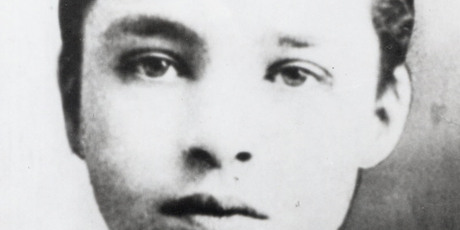
Charlie was thrown on his own resources before he reached the age of ten as the early death of his father and the subsequent illness of his mother made it necessary for Charlie and his brother, Sydney, to fend for themselves.
Having inherited natural talents from their parents, the youngsters took to the stage as the best opportunity for a career. Charlie made his professional debut as a member of a juvenile group called "The Eight Lancashire Lads" and rapidly won popular favour as an outstanding tap dancer.
Beginning of his career
When he was about fourteen, he got his first chance to act in a legitimate stage show, and appeared as "Billy" the page boy, in support of William Gillette in "Sherlock Holmes". At the close of this engagement, Charlie started a career as a comedian in vaudeville, which eventually took him to the United States in 1910 as a featured player with the Fred Karno Repertoire Company.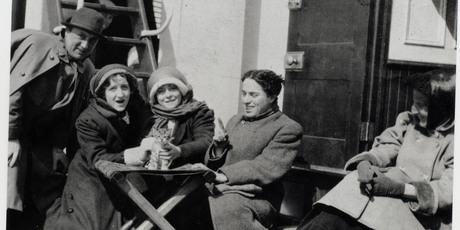
He scored an immediate hit with American audiences, particularly with his characterization in a sketch entitled "A Night in an English Music Hall". When the Fred Karno troupe returned to the United States in the fall of 1912 for a repeat tour, Chaplin was offered a motion picture contract.
He finally agreed to appear before the cameras at the expiration of his vaudeville commitments in November 1913; and his entrance in the cinema world took place that month when he joined Mack Sennett and the Keystone Film Company. His initial salary was $150 a week, but his overnight success on the screen spurred other producers to start negotiations for his services.
At the completion of his Sennett contract, Chaplin moved on to the Essanay Company (1915) at a large increase. Sydney Chaplin had then arrived from England, and took his brother’s place with Keystone as their leading comedian.
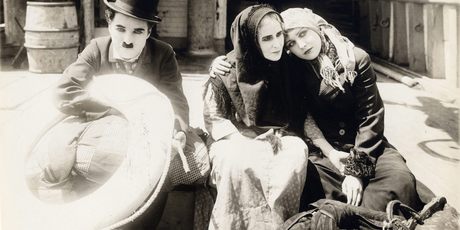
The following year Charlie was even more in demand and signed with the Mutual Film Corporation for a much larger sum to make 12 two-reel comedies. These include "The Floorwalker", "The Fireman", "The Vagabond", "One A.M." (a production in which he was the only character for the entire two reels with the exception of the entrance of a cab driver in the opening scene), "The Count", "The Pawnshop", "Behind the Screen", "The Rink", "Easy Street" (heralded as his greatest production up to that time), "The Cure", "The Immigrant" and "The Adventurer".
Gaining independence
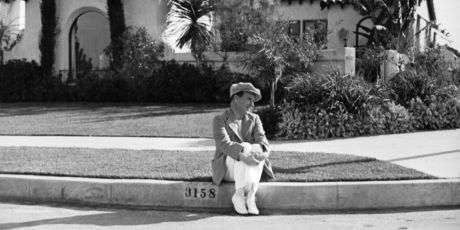
When his contract with Mutual expired in 1917, Chaplin decided to become an independent producer in a desire for more freedom and greater leisure in making his movies. To that end, he busied himself with the construction of his own studios. This plant was situated in the heart of the residential section of Hollywood at La Brea Avenue.
Early in 1918, Chaplin entered into an agreement with First National Exhibitors’ Circuit, a new organization specially formed to exploit his pictures. His first film under this new deal was "A Dog’s Life". After this production, he turned his attention to a national tour on behalf of the war effort, following which he made a film the US government used to popularize the Liberty Loan drive: "The Bond".
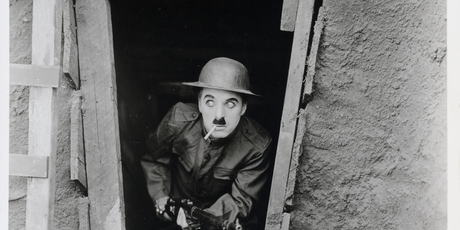
His next commercial venture was the production of a comedy dealing with the war. "Shoulder Arms", released in 1918 at a most opportune time, proved a veritable mirthquake at the box office and added enormously to Chaplin’s popularity. This he followed with "Sunnyside" and "A Day’s Pleasure", both released in 1919.
In April of that year, Chaplin joined with Mary Pickford, Douglas Fairbanks and D.W. Griffith to found the United Artists Corporation. B.B. Hampton, in his "History of the Movies" says:
"The corporation was organized as a distributor, each of the artists retaining entire control of his or her respective producing activities, delivering to United Artists the completed pictures for distribution on the same general plan they would have followed with a distributing organization which they did not own. The stock of United Artists was divided equally among the founders. This arrangement introduced a new method into the industry. Heretofore, producers and distributors had been the employers, paying salaries and sometimes a share of the profits to the stars. Under the United Artists system, the stars became their own employers. They had to do their own financing, but they received the producer profits that had formerly gone to their employers and each received his share of the profits of the distributing organization."
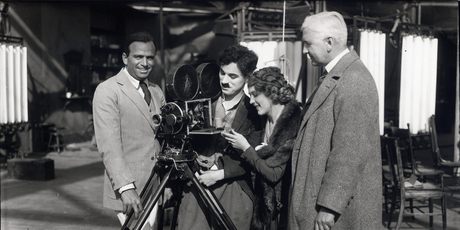
However, before he could assume his responsibilities with United Artists, Chaplin had to complete his contract with First National. So early in 1921, he came out with a six-reel masterpiece : The Kid
The Kid (1921)
The kid in which he introduced to the screen one of the greatest child actors the world has ever known - Jackie Coogan. The next year, he produced "The Idle Class", in which he portrayed a dual character.Then, feeling the need of a complete rest from his motion picture activities, Chaplin sailed for Europe in September 1921. London, Paris, Berlin and other capitals on the continent gave him tumultuous receptions. After an extended vacation, Chaplin returned to Hollywood to resume his picture work and start his active association with United Artists.
Under his arrangement with U.A., Chaplin made eight pictures, each of feature length, in the following order:
The Masterpiece Features
(Notice : the comments on each films are taken from the articles of David Robinson which we strongly recommend to read by followoing the link since they have many more insites on his life)A Woman of Paris (1923)
was a courageous step in the career of Charles Chaplin. After seventy films in which he himself had appeared in every scene, he now directed a picture in which he merely walked on for a few seconds as an unbilled and unrecognisable extra – a porter at a railroad station. Until this time, every film had been a comedy. A Woman of Paris was a romantic drama. This was not a sudden impulse. For a long time Chaplin had wanted to try his hand at directing a serious film. In the end, the inspiration for A Woman of Paris came from three women. First was Edna Purviance, who had been his ideal partner in more than 35 films. Now, though, he felt that Edna was growing too mature for comedy, and decided to make a film that would launch her on a new career as a dramatic actress.The Gold Rush (1925)
Chaplin generally strove to separate his work from his private life; but in this case the two became inextricably and painfully mixed.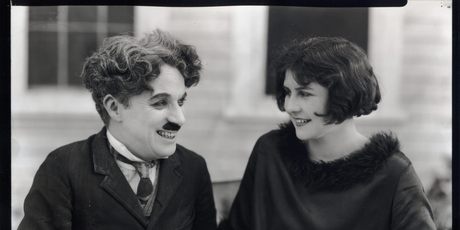
Searching for a new leading lady, he rediscovered Lillita MacMurray, whom he had employed, as a pretty 12-year-old, in The Kid Still not yet sixteen, Lillita was put under contract and re-named Lita Grey.
Chaplin quickly embarked on a clandestine affair with her; and when the film was six months into shooting, Lita discovered she was pregnant. Chaplin found himself forced into a marriage which brought misery to both partners, though it produced two sons, Charles Jr and Sydney Chaplin.
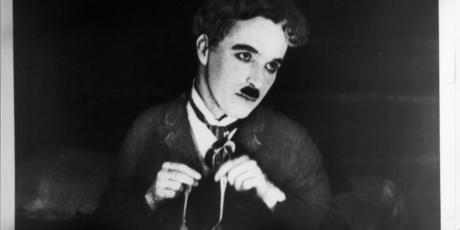
The Circus (1928)
"The Circus" won Charles Chaplin his first Academy Award – it was still not yet called the ‘Oscar’ – he was given it at the first presentations ceremony, in 1929. But as late as 1964, it seemed, this was a film he preferred to forget. The reason was not the film itself, but the deeply fraught circumstances surrounding its making.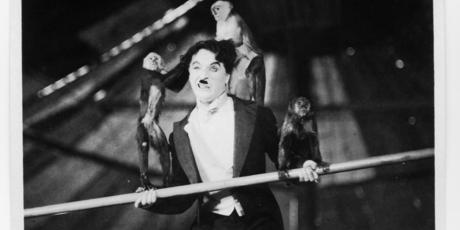
Chaplin was in the throes of the break-up of his marriage with Lita Grey; and production of The Circus coincided with one of the most unseemly and sensational divorces of twenties Hollywood, as Lita’s lawyers sought every means to ruin Chaplin’s career by smearing his reputation.
As if his domestic troubles were not enough, the film seemed fated to catastrophe of every kind [...]
In the late 1960s, after the years spent trying to forget it, Chaplin returned to "The Circus" to re-release it with a new musical score of his own composition. [...] It seemed to symbolize his reconciliation to the film which cost him so much stress.
City Lights (1931)
"City Lights" proved to be the hardest and longest undertaking of Chaplin’s career. By the time it was completed he had spent two years and eight months on the work, with almost 190 days of actual shooting. The marvel is that the finished film betrays nothing of this effort and anxiety. Even before he began City Lights the sound film was firmly established.This new revolution was a bigger challenge to Chaplin than to other silent stars. His Tramp character was universal. His mime was understood in every part of the world. But if the Tramp now began to speak in English, that world-wide audience would instantly shrink.
Chaplin boldly solved the problem by ignoring speech, and making City Lights in the way he had always worked before, as a silent film. However he astounded the press and the public by composing the entire score for "City Lights".
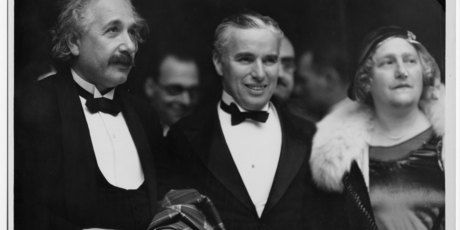
The premieres were among the most brilliant the cinema had ever seen. In Los Angeles, Chaplin’s guest was Albert Einstein; while in London Bernard Shaw sat beside him. "City Lights" was a critical triumph. All Chaplin’s struggles and anxieties, it seemed, were compensated by the film which still appears as the zenith of his achievement and reputation.
Modern Times (1936)
Chaplin was acutely preoccupied with the social and economic problems of this new age. In 1931 and 1932 he had left Hollywood behind, to embark on an 18-month world tour. In Europe, he had been disturbed to see the rise of nationalism and the social effects of the Depression, of unemployment and of automation.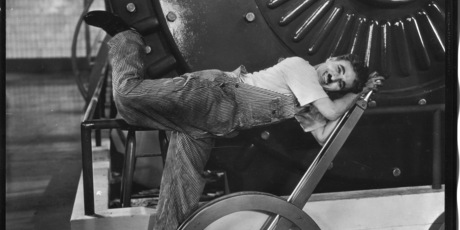
He read books on economic theory; and devised his own Economic Solution, an intelligent exercise in utopian idealism, based on a more equitable distribution not just of wealth but of work.
In 1931 he told a newspaper interviewer, “Unemployment is the vital question . . . Machinery should benefit mankind. It should not spell tragedy and throw it out of work”.
The Great Dictator (1940)
When writing "The Great Dictator" in 1939, Chaplin was as famous worldwide as Hitler, and his Tramp character wore the same moustache. He decided to pit his celebrity and humour against the dictator’s own celebrity and evil. He benefited – if that is the right word for it, given the times – from his “reputation” as a Jew, which he was not – (he said “I do not have that pleasure”).In the film Chaplin plays a dual role –a Jewish barber who lost his memory in a plane accident in the first war, and spent years in hospital before being discharged into an antisemite country that he does not understand, and Hynkel, the dictator leader of Ptomania, whose armies are the forces of the Double Cross, and who will do anything along those lines to increase his possibilities for becoming emperor of the world. Chaplin’s aim is obvious, and the film ends with a now famous and humanitarian speech made by the barber, "speaking Chaplin’s own words":/en/articles/29 .
Monsieur Verdoux (1947)
The idea was originally suggested by Orson Welles, as a project for a dramatised documentary on the career of the legendary French murder Henri Désiré Landru – who was executed in 1922, having murdered at least ten women, two dogs and one boy.Chaplin was so intrigued by the idea that he paid Welles $5000 for it. The agreement was signed in 1941, but Chaplin took four more years to complete the script. In the meantime the irritating distractions of a much-publicised and ugly paternity suit had been compensated by his brilliantly successful marriage to Oona O’Neill.
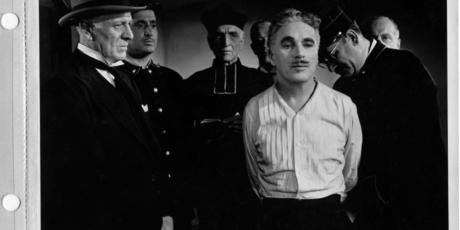
In the late 1940s, America¹s Cold War paranoia reached its peak, and Chaplin, as a foreigner with liberal and humanist sympathies, was a prime target for political witch-hunters. This was the start of Chaplin’s last and unhappiest period in the United States, which he was definitively to leave in 1952.
Limelight (1952)
Not surprisingly, then, in choosing his next subject he deliberately sought escape from disagreeable contemporary reality. He found it in bitter-sweet nostalgia for the world of his youth – the world of the London music halls at the opening of the 20th century, where he had first discovered his genius as an entertainer.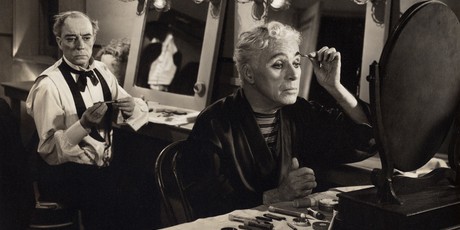
With this strong underlay of nostalgia, Chaplin was at pains to evoke as accurately as possible the London he remembered from half a century before and it is clear from the preparatory notes for the film that the character of Calvero had a very similar childhood to Chaplin’s own. Limelight's story of a once famous music hall artist whom nobody finds amusing any longer may well have been similarly autobiographical as a sort of nightmare scenario.
Chaplin’s son Sydney plays the young, talented pianist who vies with Calvero for the young ballerina’s heart, and several other Chaplin family members participated in the film. It was when on the boat travelling with his family to the London premiere of Limelight that Chaplin learned that his re-entry pass to the United States had been rescinded based on allegations regarding his morals and politics.
Chaplin therefore remained in Europe, and settled with his family at the Manoir de Ban in Corsier sur Vevey, Switzerland, with view of lake and mountains. What a difference from California. He and Oona went on to have four more children, making a total of eight.
A King in New York
With A King in New York Charles Chaplin was the first film-maker to dare to expose, through satire and ridicule, the paranoia and political intolerance which overtook the United States in the Cold War years of the 1940s and 50s. Chaplin himself had bitter personal experience of the American malaise of that time. [...]To take up film making again, as an exile, was a challenging undertaking. He was now nearing 70. For almost forty years he had enjoyed the luxury of his own studio and a staff of regular employees, who understood his way of work. Now though he had to work with strangers, in costly and unfriendly rented studios. [...] The film shows the strain.
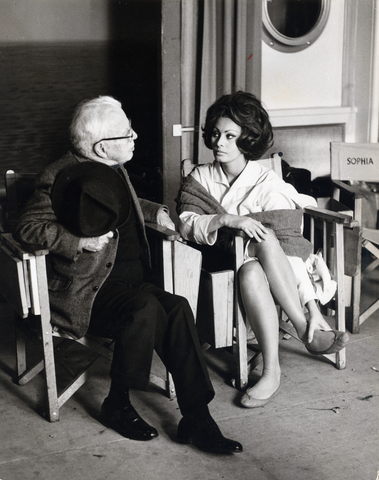
In 1966 he produced his last picture, “A Countess from Hong Kong” for Universal Pictures, his only film in colour, starring Sophia Loren and Marlon Brando. The film started as a project called Stowaway in the 1930s, planned for Paulette Goddard. Chaplin appears briefly as a ship steward, Sydney once again has an important role, and three of his daughters have small parts in the film. The film was unsuccessful at the box office, but Petula Clark had one or two hit records with songs from the soundtrack music and the music continues to be very popular.
Last Years
Chaplin’s versatility extended to writing, music and sports. He was the author of at least four books, "My Trip Abroad", "A Comedian Sees the World", "My Autobiography", "My Life in Pictures" as well as all of his scripts. An accomplished musician, though self-taught, he played a variety of instruments with equal skill and facility (playing violin and cello left-handed).He was also a composer, having written and published many songs, among them: "Sing a Song"; "With You Dear in Bombay"; and "There’s Always One You Can’t Forget",
"Smile", "Eternally", "You are My Song", as well as the soundtracks for all his filmsCharles Chaplin was one of the rare comedians who not only financed and produced all his films (with the exception of "A Countess from Hong Kong"), but was the author, actor, director and soundtrack composer of them as well.
He died on Christmas day 1977, survived by eight children from his last marriage with Oona O’Neill, and one son from his short marriage to Lita Grey.
Wednesday, April 13, 2011
Japan Nuclear Crisis:TEPCO still working on plan to end crisis
The operator of Japan's crippled nuclear plant said on Wednesday it was still working on a detailed plan to end the country's nuclear crisis a month after it began, as tests showed radiation levels in the sea near the plant had spiked.
Engineers moved a step closer to emptying highly radioactive water from one of the six crippled reactors, which would allow them to start repairing the cooling system crucial to regaining control of the reactors.
Japan's nuclear safety agency said the latest tests showed radiation nearly doubled last week, to 23 times above legal limits, in the sea off Minamisoma city near the plant.
A series of strong aftershocks this week has rattled eastern Japan, slowing the recovery effort at the Fukushima Daiichi plant due to temporary evacuations of workers and power outages.
The beleaguered president of operator Tokyo Electric Power Co (TEPCO) (9501.T) said the situation at the nuclear plant, wrecked by a 15-metre tsunami on March 11, had stabilised.
But TEPCO president Masataka Shimizu said the firm was still preparing a blueprint to end the crisis, now rated on a par with the world's worst nuclear accident, the 1986 Chernobyl disaster.
"As instructed by Prime Minister Kan we are working out the specific details of how to handle the situation so they can be disclosed as soon as possible," a relaxed-looking Shimizu told a news conference in Tokyo.
Shimizu has been largely absent from the recovery operation, spending time in hospital and only visiting the area on Monday. He refused to comment on public calls for his resignation, and again apologised to the Japanese people for the crisis.
"We are making the utmost effort to bring the reactors at Fukushima Daiichi to a cold shutdown and halt the spread of radiation," he said.
TEPCO's Tokyo head office has been the target of angry protests over the nuclear crisis and authorities took no chances on Wednesday, with riot trucks and security officers guarding the front gate during the news conference.
Latest data shows much more radiation leaked from the Daiichi plant in the early days of the crisis than first thought, prompting officials to rate it on a par with the Chernobyl disaster.
But experts were quick to point out the two crises were vastly different in terms of radiation contamination.
There have been fears of contamination among Japan's neighbours, but China said the impact there had been small, noting the radiation was just one percent of what it had experienced from Chernobyl.
The toll of the disaster is rising. More than 13,000 people have been confirmed dead, and on Wednesday the government cut its outlook for the economy, in recession for almost 15 years, for the first time in six months.
"The biggest risks, or uncertain factors for the economy, are when power supplies will recover, whether the nuclear situation will keep from worsening," Economics Minister Kaoru Yosano said.
Engineers moved a step closer to emptying highly radioactive water from one of the six crippled reactors, which would allow them to start repairing the cooling system crucial to regaining control of the reactors.
Japan's nuclear safety agency said the latest tests showed radiation nearly doubled last week, to 23 times above legal limits, in the sea off Minamisoma city near the plant.
A series of strong aftershocks this week has rattled eastern Japan, slowing the recovery effort at the Fukushima Daiichi plant due to temporary evacuations of workers and power outages.
The beleaguered president of operator Tokyo Electric Power Co (TEPCO) (9501.T) said the situation at the nuclear plant, wrecked by a 15-metre tsunami on March 11, had stabilised.
But TEPCO president Masataka Shimizu said the firm was still preparing a blueprint to end the crisis, now rated on a par with the world's worst nuclear accident, the 1986 Chernobyl disaster.
"As instructed by Prime Minister Kan we are working out the specific details of how to handle the situation so they can be disclosed as soon as possible," a relaxed-looking Shimizu told a news conference in Tokyo.
Shimizu has been largely absent from the recovery operation, spending time in hospital and only visiting the area on Monday. He refused to comment on public calls for his resignation, and again apologised to the Japanese people for the crisis.
"We are making the utmost effort to bring the reactors at Fukushima Daiichi to a cold shutdown and halt the spread of radiation," he said.
TEPCO's Tokyo head office has been the target of angry protests over the nuclear crisis and authorities took no chances on Wednesday, with riot trucks and security officers guarding the front gate during the news conference.
Latest data shows much more radiation leaked from the Daiichi plant in the early days of the crisis than first thought, prompting officials to rate it on a par with the Chernobyl disaster.
But experts were quick to point out the two crises were vastly different in terms of radiation contamination.
There have been fears of contamination among Japan's neighbours, but China said the impact there had been small, noting the radiation was just one percent of what it had experienced from Chernobyl.
The toll of the disaster is rising. More than 13,000 people have been confirmed dead, and on Wednesday the government cut its outlook for the economy, in recession for almost 15 years, for the first time in six months.
"The biggest risks, or uncertain factors for the economy, are when power supplies will recover, whether the nuclear situation will keep from worsening," Economics Minister Kaoru Yosano said.
WorD IlluSions
This one is pretty strange. Just look at the words below. Doesn't make any sense, does it? Now sit back and try to read the text. The text will explain itself.
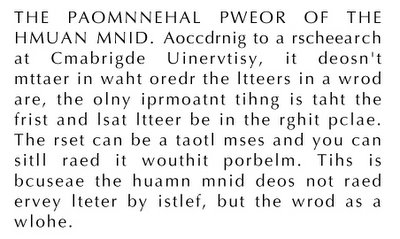
What do you read here? Most people will read evil, but some will see the good in life at the first time.

Somewhat simular to the previous illusion. When you don't see the womans reflection in the mirror, you'll read hate. But when you see her reflection, you'll see her true self.

When looking at the following illusion, you'll probably read the word Life. But when you look closer, you'll see the characters are pretty messed up.

Another double word illusion. Most people will see the word "Me" in brown directly. Only few will think about others the first time and see the other word.

The following illusion looks like a couple of blocks don't doing anything. Can you see the words within these blocks? Try closing your eyes just a little bit, looking through your eyelashes.

This is a double word illusion that fits exactly in this topic. Which two words are spelled here?

Read the text in the triangle below out loud.
 Did you read I love Paris in the springtime? If so, you're wrong. Look again and check what is really spelled.
Did you read I love Paris in the springtime? If so, you're wrong. Look again and check what is really spelled.
In this illusion you'll read the word Teach and the reflection of it. Can you read the second word (the reflection) too?

The following four illusions show faces of people. The faces are created with words, showed both sides of the person. Can you see what person it is and which words they're spelled in?
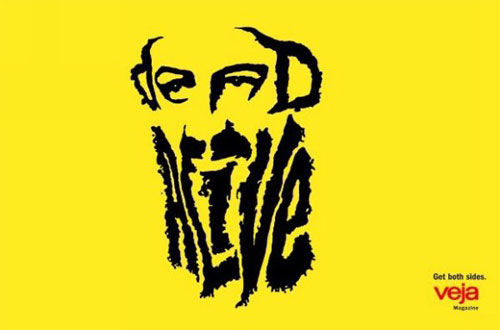
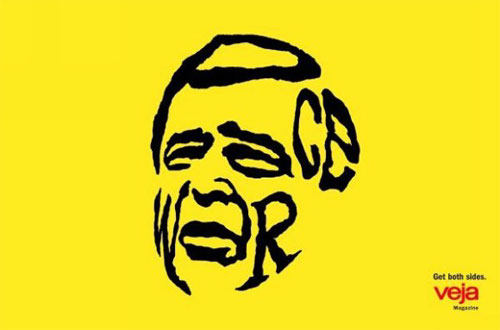
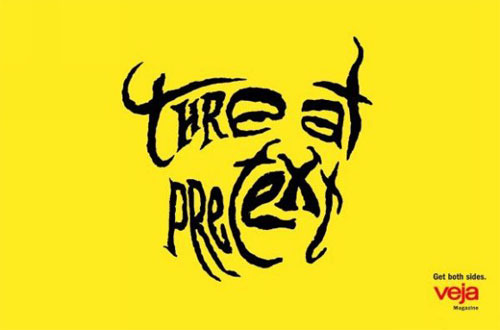
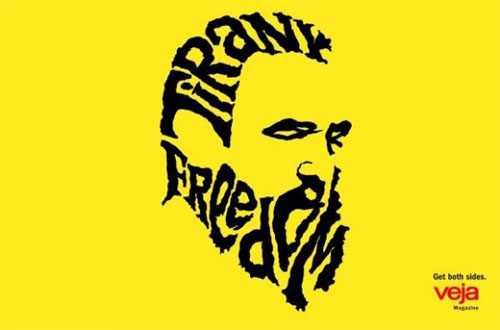

What do you read here? Most people will read evil, but some will see the good in life at the first time.

Somewhat simular to the previous illusion. When you don't see the womans reflection in the mirror, you'll read hate. But when you see her reflection, you'll see her true self.

When looking at the following illusion, you'll probably read the word Life. But when you look closer, you'll see the characters are pretty messed up.

Another double word illusion. Most people will see the word "Me" in brown directly. Only few will think about others the first time and see the other word.

The following illusion looks like a couple of blocks don't doing anything. Can you see the words within these blocks? Try closing your eyes just a little bit, looking through your eyelashes.

This is a double word illusion that fits exactly in this topic. Which two words are spelled here?

Read the text in the triangle below out loud.

In this illusion you'll read the word Teach and the reflection of it. Can you read the second word (the reflection) too?

The following four illusions show faces of people. The faces are created with words, showed both sides of the person. Can you see what person it is and which words they're spelled in?




Tuesday, April 12, 2011
Japan nuclear Crisis: At par with Chernobyl.
Japan raised the severity of its nuclear crisis at the Fukushima Daiichi nuclear plant to a level 7 from 5, putting it on par with the Chernobyl nuclear disaster in 1986. 
The rating reflects the initial severity of the crisis not the current situation which has seen radiation levels drop dramatically.
The operator of the crippled nuclear plant said that they are concerned that the radiation leakage could eventually exceed that of the 1986 Chernobyl nuclear disaster.
Japan is struggling to regain control of the Fukushima Daiichi nuclear plant after a massive earthquake and tsunami devastated its northeast on March 11, and is facing a major humanitarian and economic crisis.
The International Nuclear and Radiological Event Scale (INES) ranks nuclear incidents by their severity from 1 to a maximum of 7.
Here are some comments on the higher rating:
HIDEHIKO NISHIYAMA, A DEPUTY DIRECTOR-GENERAL AT JAPAN'S NUCLEAR and INDUSTRIAL SAFETY AUTHORITY (NISA)
We think it's very different from the accident in Chernobyl. First of all, the emission of radioactive substances is about 10 percent of the amount of Chernobyl. In the case of Chernobyl, 29 people died due to rapid absorption of massive radiation. That's not the case in Fukushima.
In the case of Fukushima, we had an explosion due to leaked hydrogen, blowing the roof off a building but the reactor containment vessel and reactor pressure vessel remains in the original shape, despite some leaks. In the case of Chernobyl, they could not keep working after the accident due to massive leaks of radioactive substances. In Fukushima, we still have engineers working to resolve the situation.
MURRAY JENNEX, ASSOCIATE PROFESSOR SAN DIEGO STATE UNIVERSITY
I think raising it to the level of Chernobyl is excessive. It's nowhere near that level. Chernobyl was terrible -- it blew and they had no containment, and they were stuck.
Their containment has been holding, the only thing that hasn't is the fuel pool that caught fire. I don't see those as the same event. If they want to do that, that's fine. I think they're being overly pessimistic.
KENJI SUMITA, OSAKA UNIVERSITY PROFESSOR
Raising the level to a 7 has serious diplomatic implications. It is telling people that the accident has the potential of causing trouble to our neighbours.
I think a level 7 is very extreme.
JAPAN'S NUCLEAR INDUSTRY AND SAFETY AGENCY (NISA)
According to the INES rating procedure, a provisional rating is given at the onset of an accident. The rating remains on a provisional status until the accident is deemed over, when a final rating is given upon analysis by a committee of experts. As for Daiichi the problems are still ongoing. This is a preliminary assessment, and is subject to finalisation by the International Atomic Energy Agency.

Monday, April 11, 2011
ANYTHING ON EARTH!!!!!!!!!: Japan: Tsunami warning Issued
Japan temporarily issued tsunami warnings for parts of the north-east coast on Monday following a powerful aftershock exactly a month after a magnitude-9 earthquake created huge waves that killed an estimated 28,000 people.
From: http://ping.fm/eZSac
From: http://ping.fm/eZSac
Japan: Tsunami warning Issued
Japan temporarily issued tsunami warnings for parts of the north-east coast on Monday following a powerful aftershock exactly a month after a magnitude-9 earthquake created huge waves that killed an estimated 28,000 people.
NHK, the public broadcaster, warned of tsunami up to 2 metres high on the coast of Ibaraki prefecture after the magnitude-7.1 quake.
Although the waves were estimated to be much smaller than those that devastated Japan's north-east coast on 11 March, the meteorological agency warned people in Ibaraki to evacuate to higher ground. The warnings were later lifted.
The aftershock came as the government announced it was widening the evacuation zone around the Fukushima Daiichi nuclear plant due to high levels of accumulated radiation and rising fears about the long-term effects on residents' health.
The government's chief spokesman, Yukio Edano, said the current 20km evacuation zone would be extended to five other communities, including the village of Iitate, which lies 40km from the plant.
The village's 5,000 residents were told to prepare to leave their homes, although the evacuation would not take place immediately as radiation levels presented no immediate threat to health.
The Asahi newspaper said the zone would be widened to 30km in some areas, depending on wind direction, adding that residents would be given about a week to prepare.
"We have made a new decision about evacuations based on data analysis of accumulated radiation exposure information," Edano told a news conference. "There is no need to evacuate immediately."
About 70,000 people living within 20km of Fukushima Daiichi have already been evacuated, and another 130,000 living inside a band 20-30km away have been told to leave voluntarily or remain indoors due to disruption to supply lines and services.
Engineers at the plant say that although progress has been made in containing radioactive water that has built up beneath reactors, they are still no closer to restoring damaged cooling systems.
Until repairs are made they cannot cool overheated fuel rods that could cause a major leak of radiation if they go into full meltdown.
The government had ignored pressure from the International Atomic Energy Agency and environmental groups to widen the evacuation zone. The US has advised its citizens not to go within 80km of the plant.
Hidehiko Nishiyama, a spokesman for Japan's nuclear safety agency, apologised for the anxiety caused by radiation leaks, and warned that the cooling systems could take months to repair.
"It's still difficult to give a timeline regarding when we can resolve the problem," Nishiyama said. "We are very sorry for the evacuees who are anxious to see the problem resolved."
The governor of Fukushima prefecture, Yuhei Sato, criticised the decision first to ask people in the area to stay indoors, then to consider leaving and now to prepare for evacuation. "Residents are very confused about what to do," he said.
Earlier, Sato refused to meet the president of the plant's operator, Tokyo Electrical Power, Masataka Shimizu, who had travelled to Fukushima to apologise to the prefecture's people.
The tsunami warning was a chilling reminder of the events of a month ago, which were marked across the country by a moment's silence at 2.46pm.
More than 14,000 people are still missing, and 152,000 survivors are living in evacuation centres.
Reflecting on the damage to his prefecture, which is also at the centre of the nuclear power crisis, Sato said: "My chest has been ripped open by the suffering and pain that this disaster has caused the people of our prefecture. I can't find the words to express my sorrow."
The prime minister, Naoto Kan, placed a message in newspapers in several countries, including Britain, China and the United States, thanking the international community for its support.
Kan said the generosity shown towards Japan in its time of need demonstrated the human capacity for kizuna, or bonds of friendship, and vowed that Japan would emerge a stronger nation.
"We deeply appreciate the kizuna our friends from around the world have shown and I want to thank every nation, entity, and you personally, from the bottom of my heart," he said.
ANYTHING ON EARTH!!!!!!!!!: Japan rattled by aftershock 1 month after tsunami
A strong new earthquake rattled Japan's northeast Monday just hours after people bowed their heads and wept in ceremonies to mark a month since the tsunami that killed up to 25,000 people and set off a still-unfolding nuclear crisis
From: http://ping.fm/PBylB
From: http://ping.fm/PBylB
Japan rattled by aftershock 1 month after tsunami
A strong new earthquake rattled Japan's northeast Monday just hours after people bowed their heads and wept in ceremonies to mark a month since the tsunami that killed up to 25,000 people and set off a still-unfolding nuclear crisis.  The quake, the second major aftershock in less than a week, was another jarring reminder of the magnitude-9.0 earthquake that spawned the massive wave March 11. People in a large electronics store in Sendai screamed and ran outside and mothers grabbed their children, but there were no immediate reports of more damage or injuries.
The quake, the second major aftershock in less than a week, was another jarring reminder of the magnitude-9.0 earthquake that spawned the massive wave March 11. People in a large electronics store in Sendai screamed and ran outside and mothers grabbed their children, but there were no immediate reports of more damage or injuries.
 The quake, the second major aftershock in less than a week, was another jarring reminder of the magnitude-9.0 earthquake that spawned the massive wave March 11. People in a large electronics store in Sendai screamed and ran outside and mothers grabbed their children, but there were no immediate reports of more damage or injuries.
The quake, the second major aftershock in less than a week, was another jarring reminder of the magnitude-9.0 earthquake that spawned the massive wave March 11. People in a large electronics store in Sendai screamed and ran outside and mothers grabbed their children, but there were no immediate reports of more damage or injuries.Officials said operations were not endangered at the tsunami-flooded Fukushima Dai-ichi nuclear complex, where power was cut by the aftershock but quickly restored. Japan's meteorological agency measured the aftershock at a magnitude of 7.0, but a U.S. monitor said it was 6.6. The epicenter of was just inland and about 100 miles (160 kilometers) north of Tokyo.
The Fukushima Dai-ichi plant is still leaking radiation after its cooling systems were knocked out by tsunami, and the government on Monday urged people in five additional communities near the plant to leave within a month, citing concerns about long-term health risks from radiation. People who lived within a 12-mile (20-kilometer) radius around the plant already have been evacuated.
With workers still far from bringing the plant under control, the bodies of thousands of tsunami victims yet to be found and more than 150,000 people living in shelters, there was little time for reflection on Japan's worst disaster since World War II.
People in hard-hit towns gathered for ceremonies at 2:46 p.m., the exact moment of the massive quake a month earlier.
"My chest has been ripped open by the suffering and pain that this disaster has caused the people of our prefecture," said Yuhei Sato, the governor of Fukushima, which saw its coastal areas devastated by the tsunami and is home to the damaged plant at the center of the nuclear crisis. "I have no words to express my sorrow."
In a devastated coastal neighborhood in the city of Natori, three dozen firemen and soldiers removed their hats and helmets and joined hands atop a small hill that has become a memorial for the dead. Earlier, four monks in pointed hats rang a prayer bell there as they chanted for those killed.
The noisy clatter of construction equipment ceased briefly as crane operators stood outside their vehicles and bowed their heads
ANYTHING ON EARTH!!!!!!!!!: Anna Hazare:Kapil Sibal should resign from Committee
Gandhian Anna Hazare today said Union HRD Minister Kapil Sibal should resign from the joint committee
From: http://ping.fm/4WB26
From: http://ping.fm/4WB26
Anna Hazare:Kapil Sibal should resign from Committee
Gandhian Anna Hazare today said Union HRD Minister Kapil Sibal should resign from the joint committee to draft the Lokpal Bill "if he feels nothing will happen" out of this institution.
Reacting to a reported statement of Sibal on the Lokpal institution, he said, "If Sibal feels that nothing will happen due to the Lokpal Bill then he should resign from the joint committee as soon as possible.
"Why is he wasting his and our time? He should do other things for the country. Why does he want to be in the committee. If you believe that nothing will happen, you should not be there in the joint committee, he should resign and do some other work," he told reporters before he left for his hometown in Maharashtra.
Sibal had yesterday told a public meeting, "I ask this question, if a poor child does not have any means for education, then how will Lokpal Bill help? If a poor man needs help for medical services then he will call up a politician. How will Lokpal Bill help."
Asked about Hazare's demand, Sibal told reporters today that he was with the Gandhian and that he wanted the Bill to be drafted as early as possible and to be effective in tackling corruption everywhere.
Clarifying his earlier remarks, he said what he had meant was that "the scope of the Bill is different. The problems of the common man are different."
"I said that if you want to educate children, then this has no connection to Lokpal. If there is no convenience of water...Lokpal is only connected to corruption and we will bring a good bill that will stop corruption."
He said they would sit with Hazare and bring out a bill so that the objective will be realised.
Reacting to a reported statement of Sibal on the Lokpal institution, he said, "If Sibal feels that nothing will happen due to the Lokpal Bill then he should resign from the joint committee as soon as possible.
"Why is he wasting his and our time? He should do other things for the country. Why does he want to be in the committee. If you believe that nothing will happen, you should not be there in the joint committee, he should resign and do some other work," he told reporters before he left for his hometown in Maharashtra.
Sibal had yesterday told a public meeting, "I ask this question, if a poor child does not have any means for education, then how will Lokpal Bill help? If a poor man needs help for medical services then he will call up a politician. How will Lokpal Bill help."
Asked about Hazare's demand, Sibal told reporters today that he was with the Gandhian and that he wanted the Bill to be drafted as early as possible and to be effective in tackling corruption everywhere.
Clarifying his earlier remarks, he said what he had meant was that "the scope of the Bill is different. The problems of the common man are different."
"I said that if you want to educate children, then this has no connection to Lokpal. If there is no convenience of water...Lokpal is only connected to corruption and we will bring a good bill that will stop corruption."
He said they would sit with Hazare and bring out a bill so that the objective will be realised.
Friday, April 8, 2011
ANYTHING ON EARTH!!!!!!!!!: Anna Hazare: Govt offers drafting panel
The Government on Friday reached out to veteran social activists and Gandhian Anna Hazare and decided to set up a joint drafting committee to bring out a strict anti-corruption law.
From: http://ping.fm/l4Bjq
From: http://ping.fm/l4Bjq
Anna Hazare: Govt offers drafting panel
The Government on Friday reached out to veteran social activists and Gandhian Anna Hazare and decided to set up a joint drafting committee to bring out a strict anti-corruption law.
The committee will have 10 members out of which five will be ministers and the other five will be from the civil society. Hazare will also be one of the members of the proposed committee.Congress spokesperson Abhishek Manu Singhvi claimed that that all the points that were raised by Hazare's supporters have been met. The Government has also decided to introduce the Lokpal Bill in the monsoon session of Parliament.
The committee will have 10 members out of which five will be ministers and the other five will be from the civil society. Hazare will also be one of the members of the proposed committee.Congress spokesperson Abhishek Manu Singhvi claimed that that all the points that were raised by Hazare's supporters have been met. The Government has also decided to introduce the Lokpal Bill in the monsoon session of Parliament.
"All points of substance have been met. We have agreed for a joint drafting committee. We will introduce the Bill (Lokpal Bill) in the monsoon session. The committee will have five nominee ministers of the Government and five members of Hazare," said Singhvi while addressing a press conference in New Delhi.
"The Congress is with the crusade against corruption. We have shown that whenever there are credible allegations the Congress party has taken concrete actions and full transparency has been maintained. We are with the nation and with the civil society in this crusade against corruption. We are taking steps for the Lokpal Bill," he said.
The convenor of drafting committee will be Law Minister Veerappa Moily.
However, the Congress also took a tough stand against some activists and questioned the role of the civil society.
The party said that accountability lies with politicians and no responsible government could accept some of the demands that had been put forward by the anti-corruption crusaders.
Reacting to the Government's proposal, Hazare's supporters said that the there should be co-chairperson of the committee and a Government order should be issued for the same. The demand for a Government order is a climbdown from their earlier demand for a notification.
Hazare has launched a fast-unto-death at New Delhi's Jantar Mantar demanding strict anti-corruption law. His fast entered the fourth day on Friday and his crusade has spread like wildfire across the country.
Massive protests have been reported from several other cities including Mumbai, Ahmedabad, Lucknow, Kolkata, Patna, Bhopal, Jaipur, Bangalore, Hyderabad, Chennai, Pune, Nashik, Ranchi, Guwahati and Thiruvananthapuram.
Anna Hazare :Letter to the Prime minister
Veteran social activist and Gandhian Anna Hazare has written an open letter to Prime Minister Manmohan Singh. In the letter dated April 6, 2011, Hazare has raised many questions and sought the Prime Minister's reply.
The 72-year-old social activist, supported by eminent persons including Kiran Bedi and Arvind Kejriwal, has been demanding that the drafting committee for the Lokpal Bill to tackle corruption should include members of civil society.
He started his fast-unto-death at New Delhi's Jantar Mantar on Tuesday to demand a stricter anti-corruption law that that is being proposed by the Government.

Below is the full text of Hazare's letter to the Prime Minister:
India Against Corruption
A-119, Kaushambi, Ghaziabad . 201010. UP Ph: 09868069953
www.indiaagainstcorruption.org
Date: April 6, 2011
To,
Dr. Manmohan Singh,
Hon'ble Prime Minister of India
New Delhi Dear
Dr. Singh,
I have started my indefinite fast at Jantar mantar. I had invited you also to fast and pray for a corruption free India on 5th April. Though I did not receive any reply from you, I am hopeful that you must have done that.
I am pained to read and hear about government's reaction to my fast. I consider it my duty to clarify the points raised on behalf of Congress party and the government by their spokespersons, as they appear in media:
1. It is being alleged that I am being instigated by some people to sit on this fast. Dear Manmohan Singh ji, this is an insult to my sense of wisdom and intelligence. I am not a kid that I could be "instigated" into going on an indefinite fast. I am a fiercely independent person. I take advice from many friends and critics, but do what my conscience directs me to do. It is my experience that when cornered, governments resort to such malicious slandering. I am pained that the government, rather than addressing the issue of corruption, is trying to allege conspiracies, when there are none.
2. It is being said that I have shown impatience. Dear Prime Minister, so far, every government has shown complete insensitivity and lack of political commitment to tackling corruption. 62 years after independence, we still do not have independent and effective anti-corruption systems. Very weak versions of Lokpal Bill were presented in Parliament eight times in last 42 years. Even these weak versions were not passed by Parliament. This means, left to themselves, the politicians and bureaucrats will never pass any law which subjects them to any kind of objective scrutiny. At a time, when the country has witnessed scams of unprecedented scale, the impatience of the entire country is justified. And we call upon you, not to look for precedents, but show courage to take unprecedented steps.
3. It is being said that I have shown impatience when the government has "initiated" the process. I would urge you to tell me - exactly what processes are underway?
a. You say that your Group of Ministers are drafting the anti-corruption law. Many of the members of this Group of Ministers have such a shady past that if effective anticorruption systems had been in place, some of them would have been behind bars. Do you want us to have faith in a process in which some of the most corrupt people of this country should draft the anti-corruption law?
b. NAC sub-committee has discussed Jan Lokpal Bill. But what does that actually mean? Will the government accept the recommendations of NAC sub-committee? So far, UPA II has shown complete contempt for even the most innocuous issues raised by NAC.
c. I and many other friends from India Against Corruption movement wrote several letters to you after 1st December. I also sent you a copy of Jan Lokpal Bill on 1st December. We did not get any response. It is only when I wrote to you that I will sit on an indefinite fast, we were promptly invited for discussions on 7th March. I wonder whether the government responds only to threats of indefinite fast. Before that, representatives of India Against Corruption had been meeting various Ministers seeking their support for the Jan Lokpal Bill. They met Mr Moily also and personally handed over copy of Jan Lokpal to him. A few hours before our meeting with you, we received a phone call from Mr Moily's office that the copy of Jan Lokpal Bill had been misplaced by his office and they wanted another copy. This is the seriousness with which the government has dealt with Jan Lokpal Bill.
d. Dear Dr Manmohan Singh ji, if you were in my place, would you have any faith in the aforesaid processes? Kindly let me know if there are any other processes underway. If you still feel that I am impatient, I am happy that I am because the whole nation is feeling impatient at the lack of credible efforts from your government against corruption.
4. What are we asking for? We are not saying that you should accept the Bill drafted by us. But kindly create a credible platform for discussions . a joint committee with at least half members from civil society suggested by us. Your spokespersons are misleading the nation when they say that there is no precedent for setting up a joint committee. At least seven laws in Maharashtra were drafted by similar joint committees and presented in Maharashtra Assembly. Maharashtra RTI Act, one of the best laws of those times, was drafted by a joint committee. Even at the centre, when 25,000 tribals came to Delhi two years ago, your government set up a joint committee on land issues within 48 hours. You yourself are the Chairperson of that committee. This means that the government is willing to set up joint committees on all other issues, but not on corruption. Why?
5. It is being said that the government wants to talk to us and we are not talking to them. This is utterly false. Tell me a single meeting when you called us and we did not come. We strongly believe in dialogue and engagement. Kindly do not mislead the country by saying that we are shunning dialogue. We request you to take some credible steps at stemming corruption. Kindly stop finding faults and suspecting conspiracies in our movement. There are none. Even if there were, it does not absolve you of your responsibilities to stop corruption.
With warm regards,
(K B Hazare)
ANNA HAZARE SUPPORTERS: COME TOGETHER
Anna Hajare - has single handedly started a fight against corruptions at high levels in India. He has started a fast unto death in New Delhi.This fast has now entered the FOURTH day & a large number of people from various walks of life continued to extend support to the crusader for a stronger anti-corruption law.
I WANT TO KNOW HOW MANY OF US REALLY SUPPORT HIM. IF YOU ARE ONE OF THE SUPPORTERS , REPLY TO THIS POST & TELL THE WORLD WHY YOU SUPPORT HIM.
Stand with Anna Hazare : www.avaaz.org - Tell PM Singh to endorse Jan Lokpal and tackle corruption
I WANT TO KNOW HOW MANY OF US REALLY SUPPORT HIM. IF YOU ARE ONE OF THE SUPPORTERS , REPLY TO THIS POST & TELL THE WORLD WHY YOU SUPPORT HIM.
Stand with Anna Hazare : www.avaaz.org - Tell PM Singh to endorse Jan Lokpal and tackle corruption
Thursday, April 7, 2011
ANYTHING ON EARTH!!!!!!!!!: ANNA HAZARE: DEMAND REJECTED
The government has rejected the demand of Anna Hazare to issue an official notification to constitute the draft committee
From: http://ping.fm/9kNGw
From: http://ping.fm/9kNGw
ANNA HAZARE: DEMAND REJECTED
The government has rejected the demand of Anna Hazare to issue an official notification to constitute the draft committee forLokpal Bill and also rejected the proposal for an outsider to lead the new committee of government and civil society.
The protesters announced that Kapil Sibal had conveyed about this decision to them and has also said that Pranab Mukherjee will head the committee.
Reacting to the government's stand, Anna Hazare announced country-wide Jail Bharo agiation on April 12.
However, later the date was changed to April 13 as organisers realised April 12 was a Ramnavami holiday and the agitation would inconvenience people.
An angry Hazare said that the people will teach the government a lesson by joinging the jail bharo agitation against the government.
Meanwhile, Anna Hazare, whose fast entered the fourth day on Friday, has said that he will not become the chairman of the proposed draft committee for the Lokpal Bill.
Addressing the thousands at the protest site, Anna Hazare said that he would only assist the committee in advisory capacity.
The fasting leaders announced that Anna Hazare will write a letter to Prime Minister manmohan Singh forwarding the names of Santosh Hegde and Justice GS Verma to lead the proposed draft committee.
The government has already rejected these names.
Hazare called for immediate decentralisation of power at the centre to ensure that there is end to corruption in governance.
Stating that Mahatma Gandhi stressed on decentralisation of power, he said his fast for Lokpal Bill was like the second fight for Independence. He said, Lokpal Bill will lead to decentralisation of power.
Hazare said Right to Information Act is an example for all to see. The RTI has led to devolution of power.
Taking a dig at the present set up, Hazare said all the agencies to tackle corruption at present are under the government and hence there has never been any positive outcome of any probe.
Hazare said we are demanding that all these agencies should come under the purview of Lokpal. This will ensure that all the corrupt will land in jail, he said.
The protesters announced that Kapil Sibal had conveyed about this decision to them and has also said that Pranab Mukherjee will head the committee.
Reacting to the government's stand, Anna Hazare announced country-wide Jail Bharo agiation on April 12.
However, later the date was changed to April 13 as organisers realised April 12 was a Ramnavami holiday and the agitation would inconvenience people.
An angry Hazare said that the people will teach the government a lesson by joinging the jail bharo agitation against the government.
Meanwhile, Anna Hazare, whose fast entered the fourth day on Friday, has said that he will not become the chairman of the proposed draft committee for the Lokpal Bill.
Addressing the thousands at the protest site, Anna Hazare said that he would only assist the committee in advisory capacity.
The fasting leaders announced that Anna Hazare will write a letter to Prime Minister manmohan Singh forwarding the names of Santosh Hegde and Justice GS Verma to lead the proposed draft committee.
The government has already rejected these names.
Hazare called for immediate decentralisation of power at the centre to ensure that there is end to corruption in governance.
Stating that Mahatma Gandhi stressed on decentralisation of power, he said his fast for Lokpal Bill was like the second fight for Independence. He said, Lokpal Bill will lead to decentralisation of power.
Hazare said Right to Information Act is an example for all to see. The RTI has led to devolution of power.
Taking a dig at the present set up, Hazare said all the agencies to tackle corruption at present are under the government and hence there has never been any positive outcome of any probe.
Hazare said we are demanding that all these agencies should come under the purview of Lokpal. This will ensure that all the corrupt will land in jail, he said.
Subscribe to:
Posts (Atom)
The Ram Mandir in Ayodhya: A Symbolic Journey from Controversy to Harmony
Introduction: The Ram Mandir, located in Ayodhya, Uttar Pradesh, India, is a sacred Hindu temple dedicated to Lord Ram, one of the most re...
-
BOOKS: Everyone Can Cook by Vikas Khanna (Author) : A simple philosophy inspired by the idea of touching lives through food, Everyone Can C...

